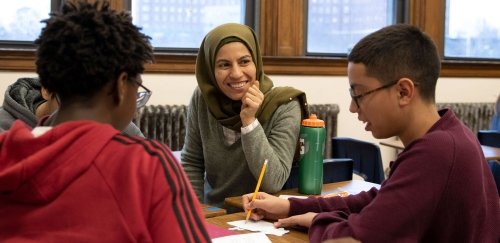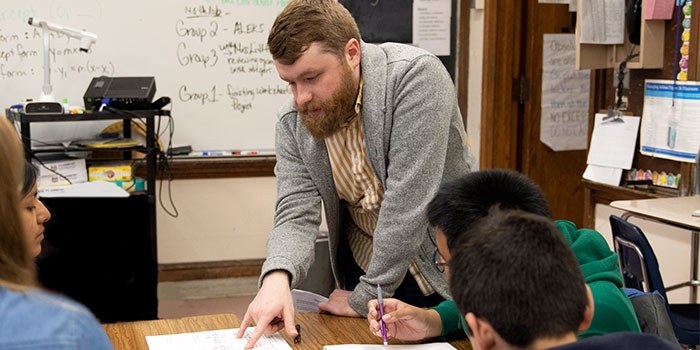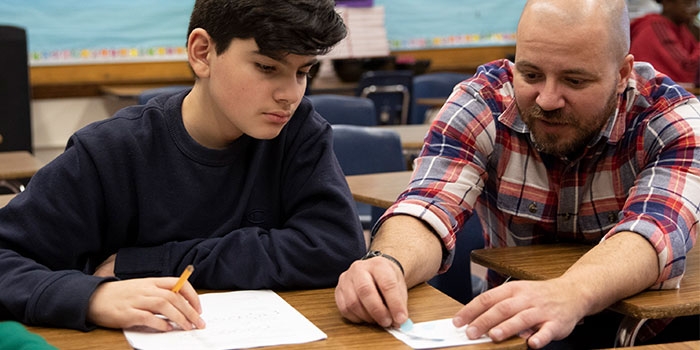Bringing Math to Underrepresented Groups
- News & Events
- News
- Bringing Math to Underrepresented Groups

Three math faculty design an afterschool math program for urban middle schoolers.
“Please take your seats,” announced a male voice from the podium.
It was yet another math conference overwhelmingly attended by white male mathematicians.
As Salam Turki, a native of Lebanon and assistant professor of mathematics at Rhode Island College, seated herself, she recalled how her relatives had questioned why she – a woman – would go into the field of mathematics instead of studying Arabic or English. Turki believes women and people of color would thrive in STEM fields if given the opportunity.
Recently, she and two of her colleagues – Assistant Professor of Math Mark Medwid and Associate Professor of Math Leonardo Pinheiro – applied for and were awarded a Tensor-SUMMA Grant by the Mathematical Association of America to create an afterschool program that encourages the pursuit and enjoyment of mathematics among groups historically underrepresented in the field of mathematics – African Americans, Native Americans, Hispanics and Pacific Islanders – and to inspire an early interest in STEM.
The program takes place at Nathanael Greene Middle School and runs from September 11 to December 11. It has attracted 11 seventh- and eighth-grade students (six boys and five girls) – all children of color – who meet once a week, from 2:45-3:45 p.m., to engage in and be challenged by math.
“We wanted to show the students a side of math they wouldn't necessarily see in the standard curriculum – real-life problems that require mathematics to solve,” said Medwid.

In one activity, the children are told that they are bridge inspectors and that their job is to cross all of the bridges in the town every day; however, they must cross the bridges only once and end up exactly where they started.
The children are split into groups and instructed to create a map of the bridges by taping pieces of paper to the floor. They then walk the bridges, experimenting with different routes. Questions and discussions ensue among the children, which lead to conjectures and theories.

“The students really got into it,” said Pinheiro. “I particularly enjoyed seeing the wheels turning in their heads and the light bulb go on as they shouted, ‘I got it!’ The answer wasn’t told to them or written in the back of a book. They discovered it the way we, as faculty, discover math – by doing the research. Some of the students came back and said, ‘We have friends who would like to join the class. Can they come?’”
“Our cohort of children has slowly grown over the weeks,” Medwid said. “If we can get just one student to become more interested in mathematics or in a STEM field we’ve achieved our goal.”
A separate session was dedicated to a guest speaker from RIC’s Admission Office to reinforce the idea that STEM careers are both attainable and rewarding.
“Research has shown that it’s not race that affects math scores. It’s zip code,” Turki said. “Disparities in math scores have more to do with resources and opportunities. If everyone had the same opportunity and resources, they would thrive. We hope to be that extra resource for these children.”
